





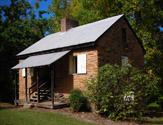









Magnolia Eden
Poncirus trifoliata 'Flying Dragon'
Revered and Respected by Southern Gardeners and Bonsai Hobbyists
Revered and Respected by Southern Gardeners and Bonsai Hobbyists
Originating in China and Korea and often referred to as Chinese bitter orange or hardy orange, Poncirus trifoliata offers year-round interest with its deciduous, trifoliate foliage, aromatic flowers, green-striped bark, intimidating spines and golf ball-size, citrus-like fruit.
While several named varieties are available, including 'Rubidoux', 'Flying Dragon', a dwarf selection, is suited for small spaces and typically thrives in the American South where it is reliably cold hardy. Introduced to the United States in 1915 from Japan by American botanist Walter Tennyson Swingle (1871-1952), the twisted 'Flying Dragon' is somewhat reminiscent of Corylus avellana 'Contorta' ("Harry Lauder's Walkding Stick") and reaches about six to eight feet in height and up to four feet in width, making a handsome focal point in any garden. Bonsai connoisseurs often select 'Flying Dragon' because of its slow growth. It tolerates full to filtered sun as well as a variety of soil conditions ranging from sandy to clay, but good drainage is ideal.
While several named varieties are available, including 'Rubidoux', 'Flying Dragon', a dwarf selection, is suited for small spaces and typically thrives in the American South where it is reliably cold hardy. Introduced to the United States in 1915 from Japan by American botanist Walter Tennyson Swingle (1871-1952), the twisted 'Flying Dragon' is somewhat reminiscent of Corylus avellana 'Contorta' ("Harry Lauder's Walkding Stick") and reaches about six to eight feet in height and up to four feet in width, making a handsome focal point in any garden. Bonsai connoisseurs often select 'Flying Dragon' because of its slow growth. It tolerates full to filtered sun as well as a variety of soil conditions ranging from sandy to clay, but good drainage is ideal.
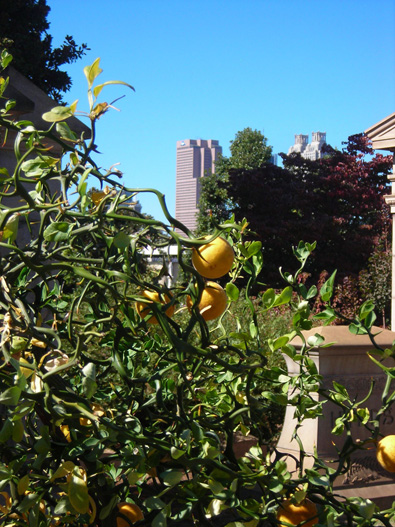
Passiflora incarnata, or Passion Flower, is a most intriguing plant, worthy of a place in any southern garden where its beauty and function can be fully appreciated. Not particularly fussy and demanding, the plant tolerates a variety of soil conditions and can thrive in full sun and partial shade. Its elaborate, showy flowers falsely allude to more exotic origins, but this American native is widespread throughout the American South and elsewhere. As if its good looks are not enough, Passion Flower is also a host plant to the beautiful Gulf Fritillary butterfly, making it of particular interest to butterfly enthusiasts.
Utilized by Native Americans and grown by southern settlers, Passiflora incarnata was introduced in England in 1629 and first offered in an American nursery/seed catalogue in 1811 by the Philadelphia-based Landreth Nursery.
A vigorous grower, the perennial Passiflora climbs by tendrils, reaching 10-20 feet. It can also be grown as a ground cover. Blooming between May and September, Passion Flower produces edible oval fruits old-timers often refer to as maypops. Many a southern kitchen has turned out jars of maypop jelly, and some commercial fruit juices available today contain extract from maypops.
While seeds can be retained from the fruits of Passiflora, it is easily propagated by rooting cuttings.
What's in a name?
Named by Roman Catholic missionaries, according to legend, Passiflora is perhaps best known for its Christian symbolism. Hardly referencing eroticism or sexuality, Passion Flower and its various parts represent Christ's crucifixion. There are ten petals for the ten apostles present at the crucifixion, an ovary column resembling a cross, three stigmas for the nails, colored filaments for the crown of thorns, five pollen-bearing anthers for Christ's wounds and coiling vine tendrils reminiscent of whips or scourges.
A Gracious Southern Host
Passiflora incarnata is especially admired by butterfly lovers because it is a host plant to the Gulf Fritillary (Agraulis vanillae). Planted in sufficient quantity along with butterfly-attracting plants like Echinacea, Buddleja and Lantana, Southern gardeners are almost guaranteed to witness nature at work as Gulf Fritillaries are drawn to the garden to lay their eggs on the various parts of Passiflora. The resulting spiny larvae feed ravenously on the leaves before pupating and emerging as a new generation of butterflies. With a wingspan of nearly three inches, the Gulf Fritillary is neither a true fritillary nor a heliconian, but rather is classified as a longwing butterfly. Ranging from New Jersey and Iowa to South America, Gulf Fritillaries are very common throughout the American South.
Where is your passion?
Passion Flower can still be found growing on old homesteads, and seeds and cuttings for rooting are often available free for the asking. Seeds are also available commercially and via heirloom seed exchanges. As catalogues begin arriving in the mail later this fall and winter, be sure to add Passiflora incarnata to your seed order. Neither you nor the butterflies will be disappointed!
Utilized by Native Americans and grown by southern settlers, Passiflora incarnata was introduced in England in 1629 and first offered in an American nursery/seed catalogue in 1811 by the Philadelphia-based Landreth Nursery.
A vigorous grower, the perennial Passiflora climbs by tendrils, reaching 10-20 feet. It can also be grown as a ground cover. Blooming between May and September, Passion Flower produces edible oval fruits old-timers often refer to as maypops. Many a southern kitchen has turned out jars of maypop jelly, and some commercial fruit juices available today contain extract from maypops.
While seeds can be retained from the fruits of Passiflora, it is easily propagated by rooting cuttings.
What's in a name?
Named by Roman Catholic missionaries, according to legend, Passiflora is perhaps best known for its Christian symbolism. Hardly referencing eroticism or sexuality, Passion Flower and its various parts represent Christ's crucifixion. There are ten petals for the ten apostles present at the crucifixion, an ovary column resembling a cross, three stigmas for the nails, colored filaments for the crown of thorns, five pollen-bearing anthers for Christ's wounds and coiling vine tendrils reminiscent of whips or scourges.
A Gracious Southern Host
Passiflora incarnata is especially admired by butterfly lovers because it is a host plant to the Gulf Fritillary (Agraulis vanillae). Planted in sufficient quantity along with butterfly-attracting plants like Echinacea, Buddleja and Lantana, Southern gardeners are almost guaranteed to witness nature at work as Gulf Fritillaries are drawn to the garden to lay their eggs on the various parts of Passiflora. The resulting spiny larvae feed ravenously on the leaves before pupating and emerging as a new generation of butterflies. With a wingspan of nearly three inches, the Gulf Fritillary is neither a true fritillary nor a heliconian, but rather is classified as a longwing butterfly. Ranging from New Jersey and Iowa to South America, Gulf Fritillaries are very common throughout the American South.
Where is your passion?
Passion Flower can still be found growing on old homesteads, and seeds and cuttings for rooting are often available free for the asking. Seeds are also available commercially and via heirloom seed exchanges. As catalogues begin arriving in the mail later this fall and winter, be sure to add Passiflora incarnata to your seed order. Neither you nor the butterflies will be disappointed!
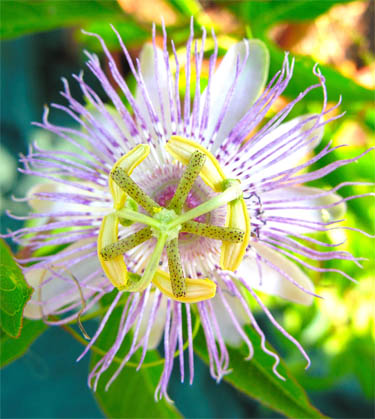
Ed Harshaw
This intricate Passiflora incarnata bloom was photographed on June 27, 2006 in the garden of Southern Edition editor Greg Freeman by Lowcountry photographer Ed Harshaw. Harshaw's work was featured in the story, Ed Harshaw: Capturing the Splendor of the Lowcountry One Photo at a Time.
This photograph provides a close-up of a Poncirus trifoliata 'Flying Dragon' growing on an arbor inside Atlanta's Oakland Cemetery, the final resting place of Gone With the Wind author, Margaret Mitchell.
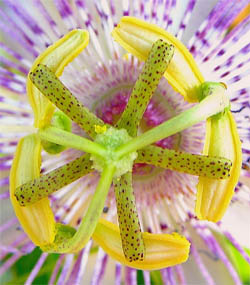
'Flying Dragon' is appreciated by plant collectors throughout the world, but is most frequently used as a rootstock for agricultural Citrus (especially tangerines), because it provides frost tolerance, increased disease resistance and reduced canopy size (thus allowing more efficient use of grove space). Hybridists have also utilized 'Flying Dragon' to produce exciting new fruit trees when crossing with Citrus species. While Swingle crossed the sweet-tasting Citrus x sinensis with Poncirus trifoliata to produce the cold hardy citrange (which unfortunately retained the bitter fruit characteristics of its Poncirus parent), 'Flying Dragon' has since been used to produce its own offspring when crossed with various Citrus species, and several have proved quite useful.
Forbidden Fruit?
Poncirus fruits are extremely bitter, rendering them inedible. While the fruit of Citrus x aurantium (Seville or bitter orange) -- an orange originating in Andalusia, Spain's southernmost autonomous community -- is used to produce the marmalade many British consumers consider a staple, the otherwise impalatable fruit of Poncirus is useful for making marmalade as well.
Forbidden Fruit?
Poncirus fruits are extremely bitter, rendering them inedible. While the fruit of Citrus x aurantium (Seville or bitter orange) -- an orange originating in Andalusia, Spain's southernmost autonomous community -- is used to produce the marmalade many British consumers consider a staple, the otherwise impalatable fruit of Poncirus is useful for making marmalade as well.
Ed Harshaw
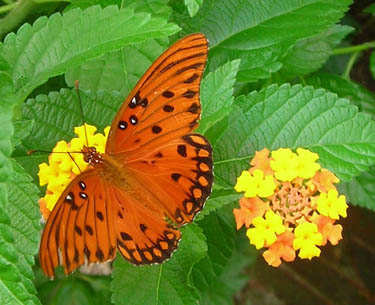
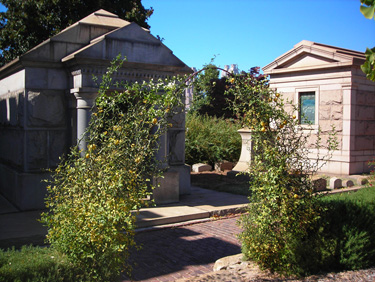
A Thorn in the Flesh?
Because of its formidable thorns, Poncirus has often been planted to form an impenetrable hedge with which trespassers dare not contend. With this in mind, gardeners should take care to strategically locate their trees and avoid planting in close proximity to walking paths or well-visited areas of the garden. Otherwise, bystanders will inevitably find themselves pricked by one of the tree's vicious spines. Nothing might prove more embarrassing than having guests receive an injury to the posterior as they bend over to smell your prize-winning roses! Plant Poncirus where, from one's vantage point, it can be admired for its contorted form rather than feared because of its thorns.
An Asian Invasian Imminent?
In addition to commanding respect because of its spines, Poncirus "has become extremely invasive" under certain conditions, according to horticulturalist and noted azalea hybridist Bob Head of Seneca, South Carolina-based Head Selects and Head Ornamentals (a plant marketing and licensing company).
Having observed entire thickets of Poncirus in out-of-the-way places while hunting in locales throughout the South Carolina Piedmont, Head says, "One of the major concerns with Poncirus is that many river bottoms in national forests and other places where land would have been under cultivation at one time have been invaded by it."
Because of its formidable thorns, Poncirus has often been planted to form an impenetrable hedge with which trespassers dare not contend. With this in mind, gardeners should take care to strategically locate their trees and avoid planting in close proximity to walking paths or well-visited areas of the garden. Otherwise, bystanders will inevitably find themselves pricked by one of the tree's vicious spines. Nothing might prove more embarrassing than having guests receive an injury to the posterior as they bend over to smell your prize-winning roses! Plant Poncirus where, from one's vantage point, it can be admired for its contorted form rather than feared because of its thorns.
An Asian Invasian Imminent?
In addition to commanding respect because of its spines, Poncirus "has become extremely invasive" under certain conditions, according to horticulturalist and noted azalea hybridist Bob Head of Seneca, South Carolina-based Head Selects and Head Ornamentals (a plant marketing and licensing company).
Having observed entire thickets of Poncirus in out-of-the-way places while hunting in locales throughout the South Carolina Piedmont, Head says, "One of the major concerns with Poncirus is that many river bottoms in national forests and other places where land would have been under cultivation at one time have been invaded by it."
A Gulf Fritillary butterfly paying a visit to Lantana 'Miss Huff'
An Arbor Adorned with Poncirus trifoliata 'Flying Dragon' Inside Atlanta's Historic Oakland Cemetery
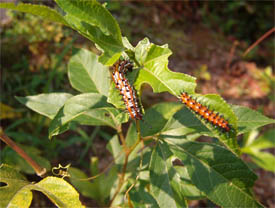
Larvae of the Gulf Fritillary butterfly feeding on the leaves of Passiflora incarnata
Since one can often see the species growing on old farms and homesteads in areas where no horticulturalists would have propagated the plant, Head speculates that Poncirus simply became a pass-along plant. With old recipes often calling for orange rinds or zest, Poncirus was plausibly an economical (or better still, free), hardy and easily had alternative to Citrus species (which would have proven costly to sharecroppers and struggling farmers and virtually impossible to grow due to their intolerance of frost). Given the tree's inclination to produce suckers, Head surmises, "Once it was obtained, people might pass along Poncirus to neighbors for use as an orange peeling substitute."
Bearing in mind its invasive potential, Poncirus should not be planted and forgotten. Head recommends 'Flying Dragon' for anyone wishing to grow Poncirus because it can be containerized or grown as a bonsai. Since 'Flying Dragon' will generally flower and produce fruit, efforts must be made to prevent its spread in the garden by harvesting the fruits. Whether the fruits are disposed of or used for culinary purposes, the objective is to prevent distribution of the seeds. Like other Poncirus, 'Flying Dragon' can also colonize due to the production of suckers, and these should be mowed or cut off at the ground with due diligence. If thoughtfully planted and properly managed, however, 'Flying Dragon' can prove to be an enjoyable, eye-catching addition to the garden or bonsai collection.
Bearing in mind its invasive potential, Poncirus should not be planted and forgotten. Head recommends 'Flying Dragon' for anyone wishing to grow Poncirus because it can be containerized or grown as a bonsai. Since 'Flying Dragon' will generally flower and produce fruit, efforts must be made to prevent its spread in the garden by harvesting the fruits. Whether the fruits are disposed of or used for culinary purposes, the objective is to prevent distribution of the seeds. Like other Poncirus, 'Flying Dragon' can also colonize due to the production of suckers, and these should be mowed or cut off at the ground with due diligence. If thoughtfully planted and properly managed, however, 'Flying Dragon' can prove to be an enjoyable, eye-catching addition to the garden or bonsai collection.
BIBLIOGRAPHY
Leon Dexter Batchelor and Herbert John Webber (eds.), The Citrus Industry (Berkeley, California: University of California Press, 1948).
Frank Suozhan Cheng and Mikeal L. Roose, "Origin and Inheritance of Dwarfing by the Citrus Rootstock Poncirus trifoliata 'Flying Dragon'," Journal of the American Society for Horticultural Science, March 1995.
William C. Welch and Greg Grant, Heirloom Gardening in the South: Yesterday's Plants for Today's Gardens (College Station, Texas: Texas A&M University Press, 2011).
OTHER SOURCES
Telephone conversation with Bob Head, Head Ornamentals, Inc. and Head Selects, Seneca, South Carolina on September 29, 2012
Leon Dexter Batchelor and Herbert John Webber (eds.), The Citrus Industry (Berkeley, California: University of California Press, 1948).
Frank Suozhan Cheng and Mikeal L. Roose, "Origin and Inheritance of Dwarfing by the Citrus Rootstock Poncirus trifoliata 'Flying Dragon'," Journal of the American Society for Horticultural Science, March 1995.
William C. Welch and Greg Grant, Heirloom Gardening in the South: Yesterday's Plants for Today's Gardens (College Station, Texas: Texas A&M University Press, 2011).
OTHER SOURCES
Telephone conversation with Bob Head, Head Ornamentals, Inc. and Head Selects, Seneca, South Carolina on September 29, 2012
Author: Greg Freeman. Published October 5, 2012.
Copyright
Southern Edition
All Rights Reserved
Southern Edition
All Rights Reserved
All materials contained on this site, including text and images, are protected by copyright laws and may not be reproduced without prior written permission from the publisher. Where applicable, use of some items contained on this site may require permission from other copyright owners.
Fair Use of text from SouthernEdition.com is permitted to the extent allowed by copyright law. Proper citation is requested. Please use this guide when citing a Southern Edition article.
Contact Greg Freeman or SouthernEdition.comFair Use of text from SouthernEdition.com is permitted to the extent allowed by copyright law. Proper citation is requested. Please use this guide when citing a Southern Edition article.